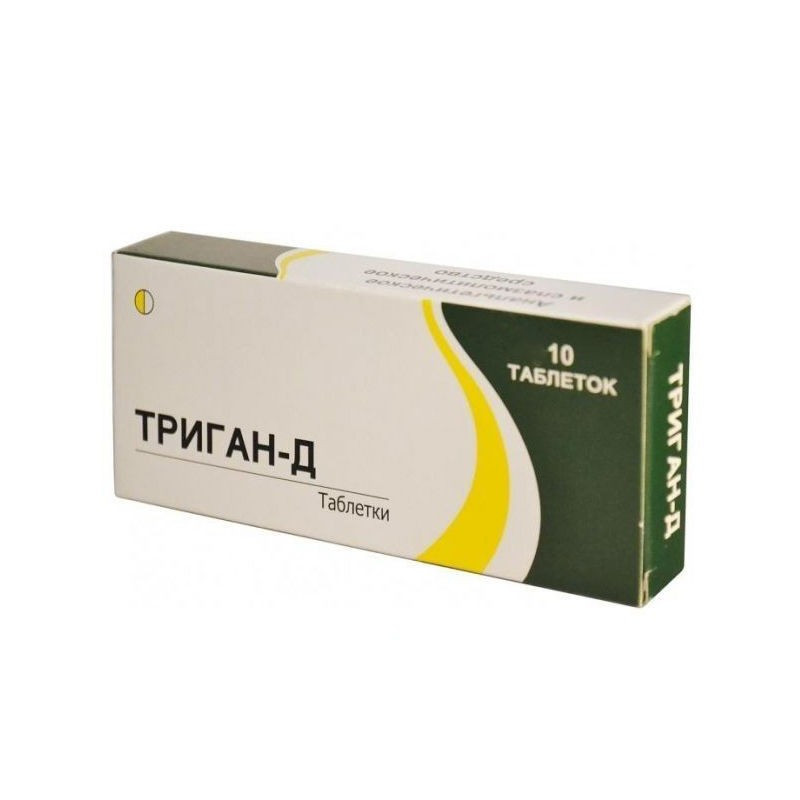



 All payments are encrypted via SSL
All payments are encrypted via SSL
 Full Refund if you haven't received your order
Full Refund if you haven't received your order
Pills
Dicyclomine hydrochloride, Paracetamol
10 pieces
TRIGAN-D has anticholinergic activity and directly relaxes smooth muscles, relieves pain.
Dicyclomine hydrochloride is a tertiary amine with antimuscarinic, antispasmodic and muscular-relaxing properties. Dicyclomine is very effective in gastrointestinal spasm, especially with that associated with irritable bowel syndrome.
Paracetamol is a nonsteroidal anti-inflammatory drug and both act synergistically with parcetamol to accelerate the pain relief process.
- spasm of smooth muscles of internal organs;
- intestinal, hepatic and renal colic;
- Algomenorrhea;
- headache, toothache, migraine pain;
- neuralgia;
- myalgia;
- infectious and inflammatory diseases accompanied by fever.
- hypersensitivity to paracetamol and dicycloverin;
- obstructive bowel disease;
- peptic ulcer and 12 duodenal ulcer (acute phase);
- reflux esophagitis;
- hypovolemic shock;
- myasthenia gravis;
- pregnancy;
- lactation period;
- children's age (up to 15 years).
Contraindicated
It is applied orally to adults and children over 15 years old on 1 pill 2-3. The maximum single dose for adults is 2 tablets, daily 4 tablets. The duration of treatment without consultation with a doctor is not more than 5 days when prescribed as an anesthetic and 3 days as an antipyretic. With prolonged use of the drug is necessary to control the picture of peripheral blood and the functional state of the liver.
From the gastrointestinal tract: dry mouth, loss of taste, loss of appetite, epigastric pain, constipation, increased liver enzymes, usually without developing jaundice, hepatonecrosis (dose-dependent effect).
Allergic reactions: skin rash, pruritus, urticaria, Quincke edema, exudative erythema multiforme (including Stevens-Johnson syndrome), toxic epidermal necrolysis (Lyell's syndrome).
CNS sideways (usually develops when taking high doses): drowsiness, dizziness, psychomotor agitation and disorientation.
On the part of the endocrine system: hypoglycemia, up to hypoglycemic coma.
From the side of blood-forming organs: anemia, methemoglobinemia (cyanosis, shortness of breath, pain in the heart), hemolytic anemia (especially for patients with gluco-6-phosphate dehydrogenase deficiency).
From the genitourinary system: pyuria, urinary retention, interstitial nephritis, papillary necrosis.
From the organs of vision: mydriasis, blurred vision, accommodation paralysis, increased out-of-eye distance.
The effect is enhanced by amantadine, antipsychotic agents, benzodiazepines, MAO inhibitors, narcotic analgesics, nitrates and nitrites, sympathomimetics, tricyclic antidepressants, cholinolytics, corticosteroids; reduce - antacids.
Enhances the effects of Digoxin.
In dry, the dark place at a temperature of no higher than 25 ° C
